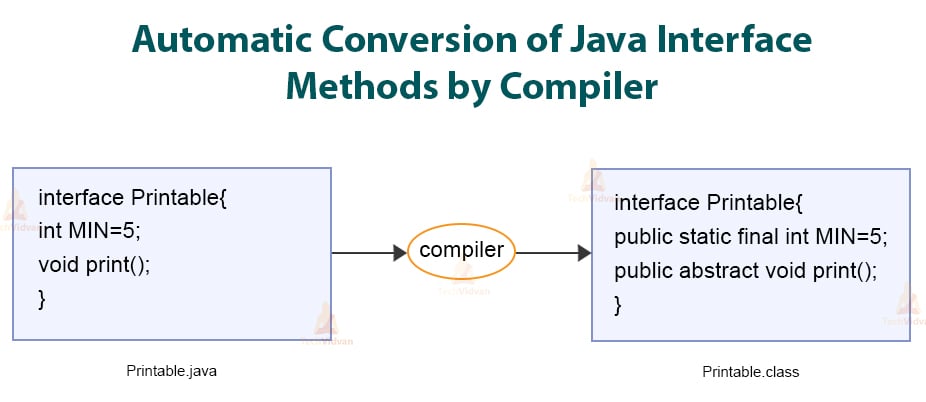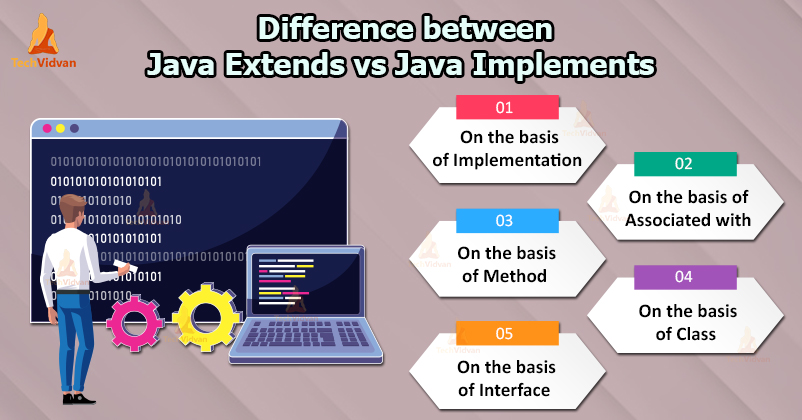
Means, a class cannot inherit more than one class but.
#Java interface multiple extends code
So, the class who implement interface B, all methods from interface B and interface will be available to the class to implement it. Java does not support multiple Inheritance of classes but it supports multiple inheritance for interfaces. One of the core principles of Object-Oriented Programming inheritance enables us to reuse existing code or extend an existing type. For example below, interface B is extending the interface A. In java, an interface can inherit/extends another interface. Only the class that 'implements' the interface can implement the methods. The difference between an interface and a regular class is that in an interface you can not implement any of the declared methods. Interface Extends another Interfaces example implements is for implementing an interface.

The parent interfaces are declared in a comma-separated list, after the implements keyword. Interfaces are not classes, however, and a class can implement more than one interface. Multiple inheritance (extends) is not allowed. Syntax to declare variables within an interface. A Java class can only extend one parent class. The only way to make what you want possible is by rewriting the entire Java generic system and breaking compatibility with older versions of Java (like Microsoft did when it introduced generics on. And can have only public access modifier.įor example, here is a string variable declared in the interface. Click Upvote: No, type erasure is still the mechanism for generics on Java 8. In an interface, variables are static and final by default. Interface names cannot start with a number.This is called composition - its when a class uses instances of one or more other classes. So one way to define an abstract data type in Java is as an interface, with its implementation as a class implementing. A class implements an interface if it declares the interface in its implements clause, and provides method bodies for all of the interface’s methods. There are ways to get what you want though, the easiest of which might be to have another class that extends JApplet, and have that class use your game class. An interface in Java is a list of method signatures, but no method bodies. The name of an interface in java should be in camel case and with starting letter in upper case You cannot have a class extend from more than 1 class.If you have a look on java libraries source code, you should find the naming convention in camel case with first letter in upper case. Some people try to write interface name by prefixing with capital letter “I” e.g. Mainly, in java application, we use naming convention for code readability purpose.

For example, Set, Map and SortedSet (CamelCase) etc. In this article, we will discuss why java doesnt allow multiple inheritance and how we can use interfaces instead of.

Java does not allow multiple inheritance directly through the. Although both the keywords align with the concept of inheritance, the implements keyword is primarily associated with abstraction and used to define a contract, and extends is used to extend a class’s existing functionality. Multiple inheritance: If one class extending more than one class is called Multiple inheritance. The name of an interface in java should be in camel case with starting letter in upper case. Unlike extends, any class can implement multiple interfaces. We use Interfaces in java to achieve multiple inheritance in java programs and loose coupling in java or say abstraction as well. Class B is implementing and overriding the f() method of interface A. This class will act as a base class.In below figure, an interface A has a variable PI and a method f(). Let’s start by creating a class called Media that has id, title, and artist. Unlike extends, any class can implement multiple interfaces.Īlthough both the keywords align with the concept of inheritance, the implements keyword is primarily associated with abstraction and used to define a contract, and extends is used to extend a class’s existing functionality. A class will implement the interface and define these abstract methods as per the required functionality.

An interface consists only of abstract methods. On the other hand, we use the implements keyword to implement an interface. Also, a base class can have many derived classes, but a derived class can have only one base class because Java doesn’t support multiple inheritance. Mainly, the extends keyword is used to extend the functionality of a parent class to the derived classes. The class that acts as a parent is called a base class, and the class that inherits from this base class is called a derived or a child class. We use the extends keyword to inherit properties and methods from a class. Multiple inheritance is only available for interfaces that do not carry any state or. Let’s discuss the differences between both the keywords. Java classes are only allowed to inherit from a single parent class.


 0 kommentar(er)
0 kommentar(er)
